Murder will out
In 1936 the Detection Club published an anthology of real-life crime stories compiled and written by some of their members - The anatomy of murder. The book consists of seven critical considerations of murder cases, some well-known (Constance Kent, Landru, Rattenbury and Stoner), some less-so (Henry Kinder, Adelaide Bartlett, Julia Wallace, the Lakey New Zealand case). The same can also be said of the authors themselves, there are some famous names - Dorothy L. Sayers, Francis Iles, Freeman Wills Crofts, and some lesser known, or even forgotten names - Helen Simpson, John Rhode, Margaret Cole, and E.B Punshon.
Partly as a result of the uneveness of the authors concerned, the book tends to be a bit of a curate's egg, with some stunning writing, and some extraordinary cases, and some that are less successful or interesting.
The Henry Kinder murder by Helen Simpson was one of the least successful. An odd case of murder in Australia in which a rather bizzare menage-a-trois explodes into murder. The murderer was quickly certified insane as I have no doubt he would have been today. The only point that I did find interesting was the information contained in the preface that elements of the Kinder case had been reused in several detective stories by P.D. James, it also strongly reminded me of Agatha Christies such as Ordeal by Innocence and Towards zero. Simpson's writing however failed to draw me into the case.
John Rhode's account of the Constance Kent case (made famous today by Kate Summerscale's The suspicions of Mr. Whicher) is a curiously staid account of the case. One thing of interest though is that Rhode proved to be rather more perceptive about Kent's own post-trial account of her case than legal experts of the time.
Margaret Cole's account of the Adelaide Bartlett case was fascinating. I loved Margaret Cole's writing style, and would love to find some of her novels (written in conjunction with her husband). Another unexpectedly brilliant piece of writing was the forgotten E.R. Punshon's account of the Landru murders. A macabre tale that surely is worthy of being turned into a novel. E.R. Punshon was apparently quite a noted writer from the Golden Age of Fiction, now forgotten. Time to resurrect his stories, I think.
As might perhaps be expected the three best accounts are from the three best writers - Sayers, Iles, and Crofts. Dorothy L. Sayers' account of the Wallace murder is stunningly good. The murder of Julia Wallace divided the nation with one half firmly convinced that her husband was guilty and the other half equally convinced that he wasn't. The Wallace murder also made British legal history when Wallace was found guilty by a jury, and then found Not guilty by the Court of Appeal. Sayers is more on the side of innocence than guilt, but the tale she tells is intriguing and really could be read either way. It struck me again reading this how much of an influence real life crime is on crime novels. I'm sure that there were elements in this case that influenced the writing of what would become Dial M for Murder.
Francis Iles presents a brilliant short account of the Rattenbury / Stoner case, along with a quick reference to one of the very best of the Notable British Trials series, F. Tennyson Jesse's account of the case. A moving account of a love triangle gone very wrong.
The very best of these true crime cases though was the last in the book, written by Freeman Wills Crofts, it was about a murder that I'd never heard of - the Lakey murder case, which happened in a remote part of New Zealand in 1933. What I found truly astonishing about this case was the way in which science and some neat detective work brought the crime home to the murderer. Even by today's standards, the scientific work that brought the criminal to justice is stunning. There's some more recent information on the Lakey case here.
These are a fascinating insight into notable murders of the late nineteenth / early twentieth centuries, they're also an incredible insight into the writings and writers of the Golden Age of Detective Fiction. The anatomy of murder is an essential read for any lover of crime fiction.
Partly as a result of the uneveness of the authors concerned, the book tends to be a bit of a curate's egg, with some stunning writing, and some extraordinary cases, and some that are less successful or interesting.
The Henry Kinder murder by Helen Simpson was one of the least successful. An odd case of murder in Australia in which a rather bizzare menage-a-trois explodes into murder. The murderer was quickly certified insane as I have no doubt he would have been today. The only point that I did find interesting was the information contained in the preface that elements of the Kinder case had been reused in several detective stories by P.D. James, it also strongly reminded me of Agatha Christies such as Ordeal by Innocence and Towards zero. Simpson's writing however failed to draw me into the case.
John Rhode's account of the Constance Kent case (made famous today by Kate Summerscale's The suspicions of Mr. Whicher) is a curiously staid account of the case. One thing of interest though is that Rhode proved to be rather more perceptive about Kent's own post-trial account of her case than legal experts of the time.
Margaret Cole's account of the Adelaide Bartlett case was fascinating. I loved Margaret Cole's writing style, and would love to find some of her novels (written in conjunction with her husband). Another unexpectedly brilliant piece of writing was the forgotten E.R. Punshon's account of the Landru murders. A macabre tale that surely is worthy of being turned into a novel. E.R. Punshon was apparently quite a noted writer from the Golden Age of Fiction, now forgotten. Time to resurrect his stories, I think.
As might perhaps be expected the three best accounts are from the three best writers - Sayers, Iles, and Crofts. Dorothy L. Sayers' account of the Wallace murder is stunningly good. The murder of Julia Wallace divided the nation with one half firmly convinced that her husband was guilty and the other half equally convinced that he wasn't. The Wallace murder also made British legal history when Wallace was found guilty by a jury, and then found Not guilty by the Court of Appeal. Sayers is more on the side of innocence than guilt, but the tale she tells is intriguing and really could be read either way. It struck me again reading this how much of an influence real life crime is on crime novels. I'm sure that there were elements in this case that influenced the writing of what would become Dial M for Murder.
Francis Iles presents a brilliant short account of the Rattenbury / Stoner case, along with a quick reference to one of the very best of the Notable British Trials series, F. Tennyson Jesse's account of the case. A moving account of a love triangle gone very wrong.
The very best of these true crime cases though was the last in the book, written by Freeman Wills Crofts, it was about a murder that I'd never heard of - the Lakey murder case, which happened in a remote part of New Zealand in 1933. What I found truly astonishing about this case was the way in which science and some neat detective work brought the crime home to the murderer. Even by today's standards, the scientific work that brought the criminal to justice is stunning. There's some more recent information on the Lakey case here.
These are a fascinating insight into notable murders of the late nineteenth / early twentieth centuries, they're also an incredible insight into the writings and writers of the Golden Age of Detective Fiction. The anatomy of murder is an essential read for any lover of crime fiction.

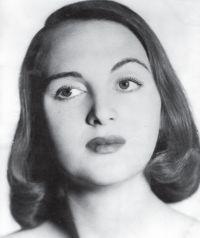
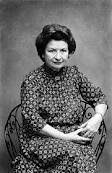
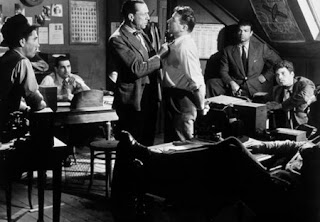


.jpeg)

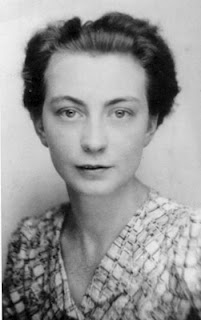

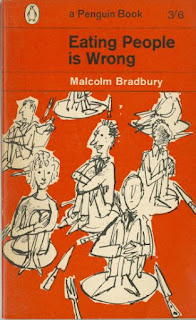
Comments